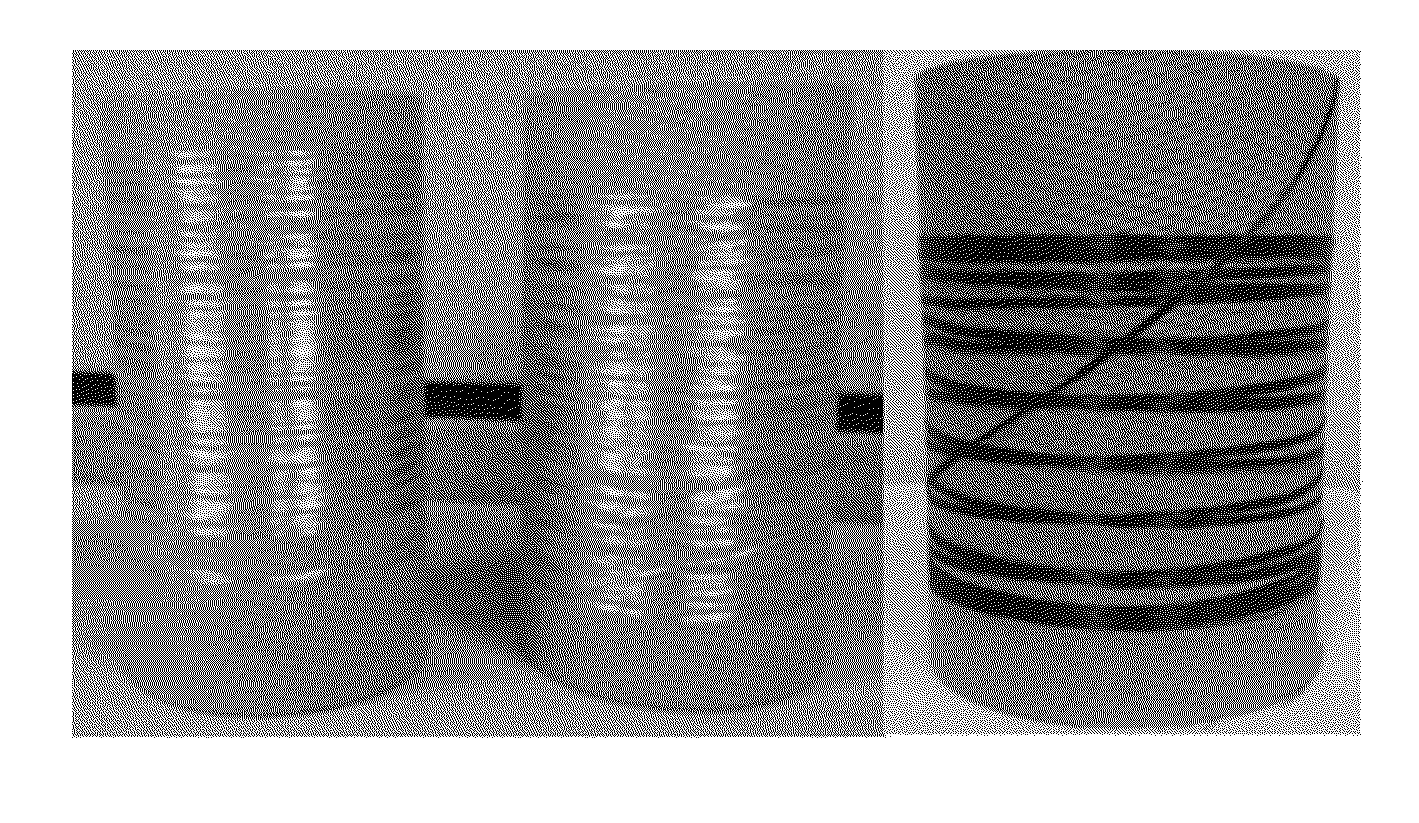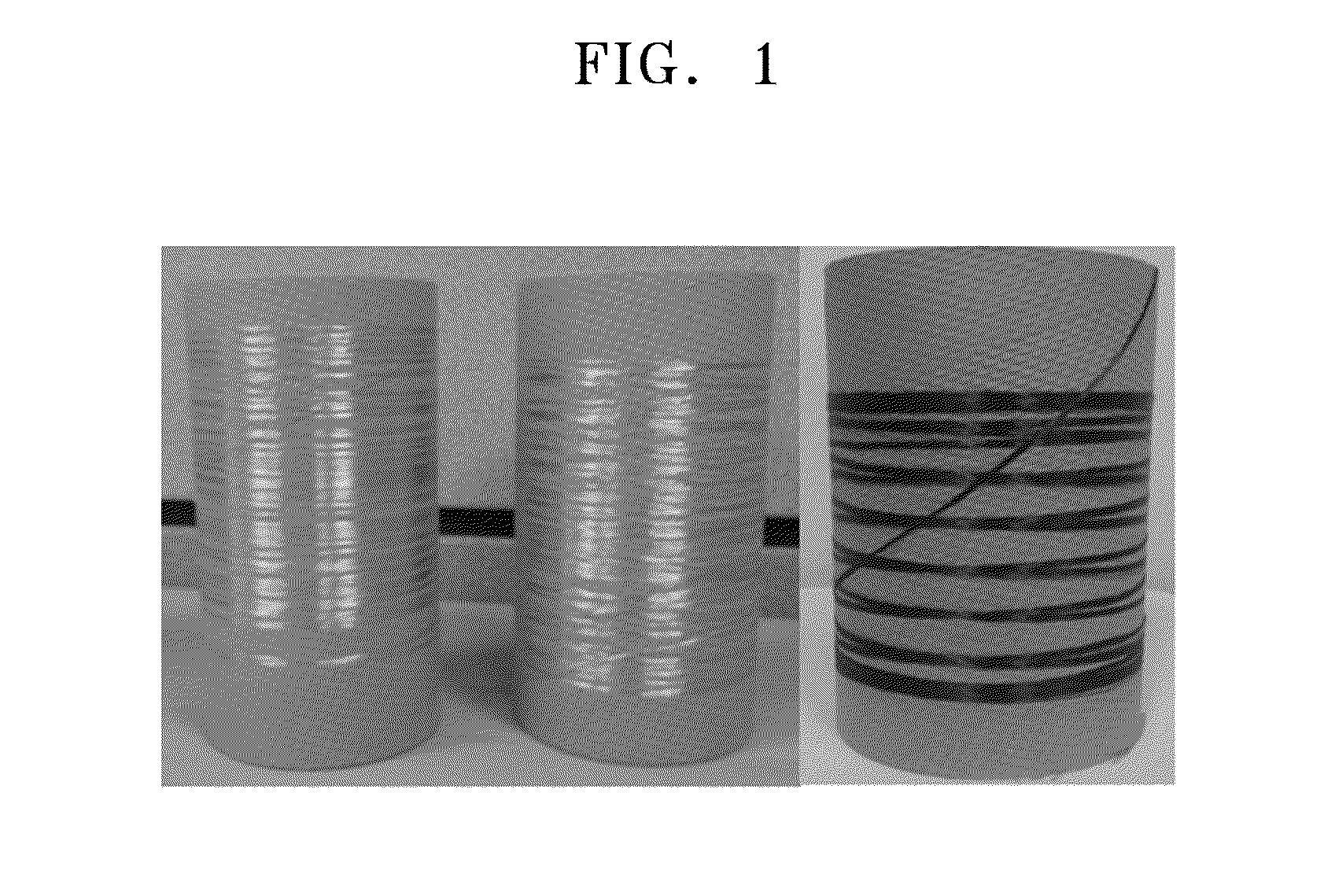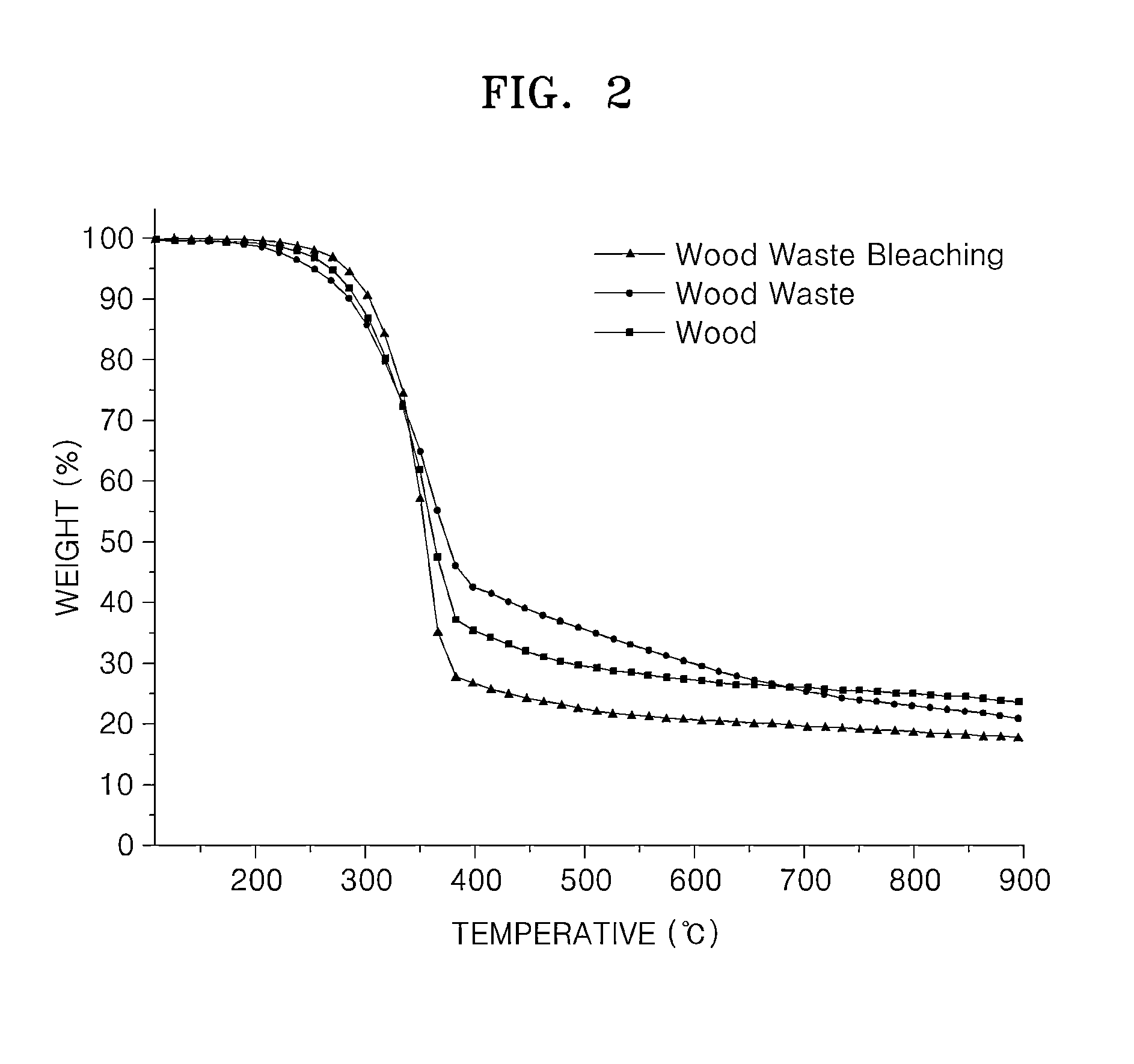Method of preparing carbon fiber from wood waste including adhesive
- Summary
- Abstract
- Description
- Claims
- Application Information
AI Technical Summary
Benefits of technology
Problems solved by technology
Method used
Image
Examples
example 2
[0058]A thermogravimetric analysis (TGA) was performed to verify whether or not the adhesive impregnated in wood waste had been eliminated after pulping and bleaching in Example 1 and Comparative Example 2, and the results are compared in FIGS. 2 and 3.
[0059]FIG. 2 shows a graph comparing TGA results of pine tree wood waste including an adhesive (the raw material used in Comparative Example 1 and Example 1, denoted as “wood waste” in FIG. 2), pure unprocessed pine tree wood of the same species (the raw material used in Comparative Example 2, denoted as “wood” in FIG. 2), and cellulose pulp obtained by pulping the pine tree wood waste including an adhesive with 40% sodium hydroxide and then bleaching with 10% chlorine (pulp obtained in Example 1, denoted as “wood waste bleaching” in FIG. 2).
[0060]As shown in FIG. 2, a comparison of TGA results of wood waste and wood indicates that pyrolysis remnant of wood waste was lower than that of wood. In case of pyrolysis of wood waste, pyrolys...
example 3
[0066]As in Example 1, bleached cellulose pulp was obtained by pulping the wood waste using 40% sodium hydroxide and bleaching the cellulose pulp using chlorine dioxide of 10 wt % with reference to the weight of the dried cellulose pulp weight. The α-cellulose content of the pulp was about 92% and degree of polymerization of the pulp was about 780.
[0067]The cellulose pulp thus obtained was dried and then added to N-methylmorpholine N-oxide monohydrate (NMMO.H2O). A spinning dope was prepared by dissolving the cellulose pulp by heating and stirring the mixture at a temperature of about 105° C. for about two hours. The mixing ratio was NMMO.H2O:the pulp=95:5 to 92:8 (with reference to the weight ratio).
[0068]The spinning dope was injected to a dry-jet wet spinning having a spinneret including 100 spinning nozzles of 0.05 mm diameter, and then spun at a spinning temperature of about 90° C. at a discharge rate of 0.2 g / min in an air layer of 2 cm in a coagulation bath including water of...
example 4
[0070]In Example 4, as a precursor fiber, cellulose fiber filament prepared in Example 3 at drawing ratios of 10 times and 15 times was put into stabilizing and carbonizing processes to prepare carbon fiber. In the stabilizing process, the precursor fiber was treated with atmospheric-pressure RF plasma and heat simultaneously in a fiber stabilization instrument. The RF plasma was supplied by providing electric power of 250 W to a 13.56 MHz RF wave source. Stable discharge was induced by coating the power electrode with insulator of 1 mm thickness. Surface damage of the precursor fiber by plasma was suppressed by preventing a direct contact between the precursor fiber and active species generated by plasma discharge by locating a grounded grid electrode at a position about 1 mm from the insulator surface of the power electrode.
[0071]The stabilizing process was divided into two stages. In the first stage, plasma was discharged by increasing the temperature inside the fiber stabilizati...
PUM
| Property | Measurement | Unit |
|---|---|---|
| Temperature | aaaaa | aaaaa |
| Temperature | aaaaa | aaaaa |
| Temperature | aaaaa | aaaaa |
Abstract
Description
Claims
Application Information
 Login to View More
Login to View More - R&D
- Intellectual Property
- Life Sciences
- Materials
- Tech Scout
- Unparalleled Data Quality
- Higher Quality Content
- 60% Fewer Hallucinations
Browse by: Latest US Patents, China's latest patents, Technical Efficacy Thesaurus, Application Domain, Technology Topic, Popular Technical Reports.
© 2025 PatSnap. All rights reserved.Legal|Privacy policy|Modern Slavery Act Transparency Statement|Sitemap|About US| Contact US: help@patsnap.com



